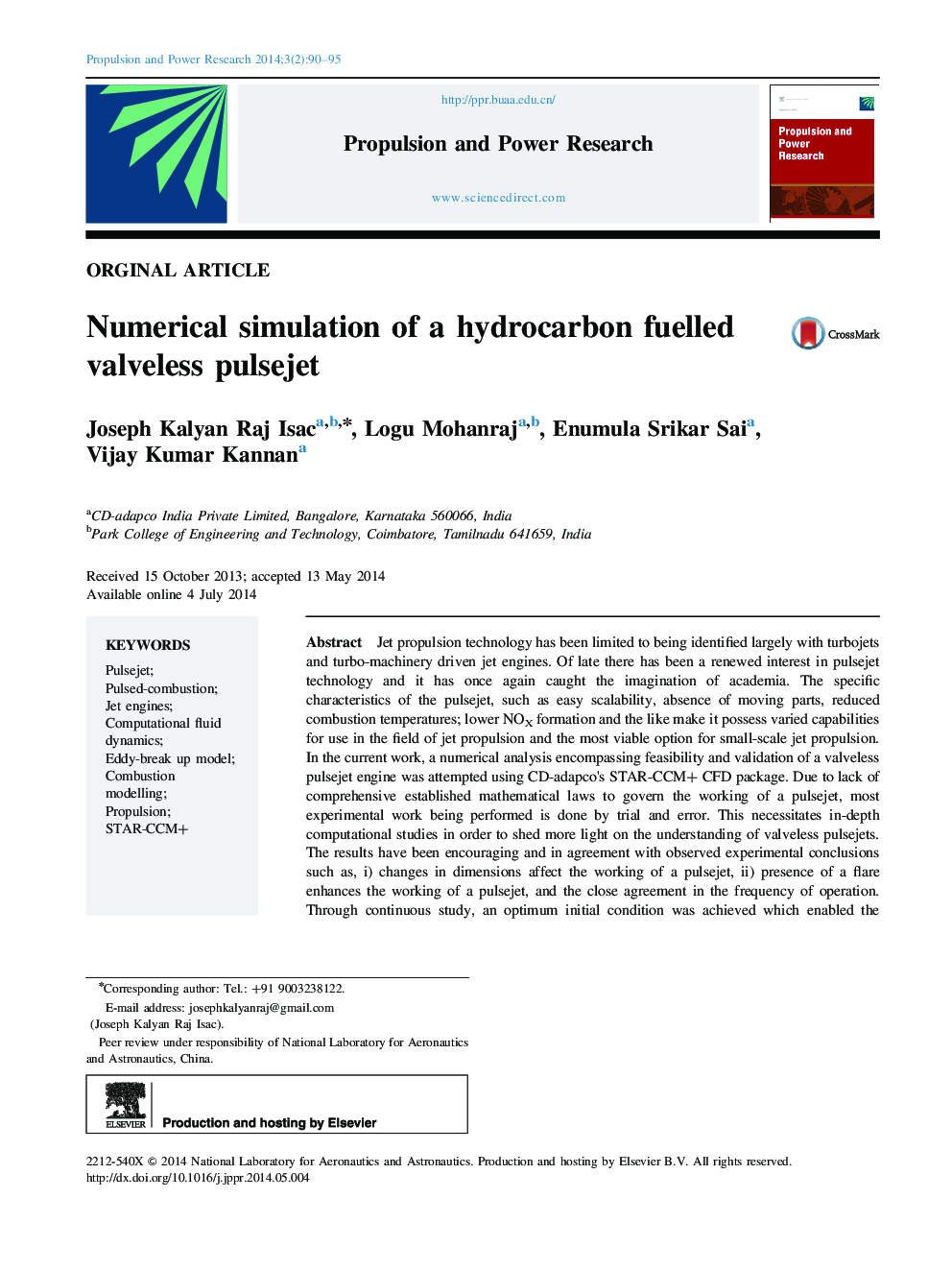| Article ID | Journal | Published Year | Pages | File Type |
|---|---|---|---|---|
| 1719725 | Propulsion and Power Research | 2014 | 6 Pages |
Jet propulsion technology has been limited to being identified largely with turbojets and turbo-machinery driven jet engines. Of late there has been a renewed interest in pulsejet technology and it has once again caught the imagination of academia. The specific characteristics of the pulsejet, such as easy scalability, absence of moving parts, reduced combustion temperatures; lower NOX formation and the like make it possess varied capabilities for use in the field of jet propulsion and the most viable option for small-scale jet propulsion.In the current work, a numerical analysis encompassing feasibility and validation of a valveless pulsejet engine was attempted using CD-adapco׳s STAR-CCM+ CFD package. Due to lack of comprehensive established mathematical laws to govern the working of a pulsejet, most experimental work being performed is done by trial and error. This necessitates in-depth computational studies in order to shed more light on the understanding of valveless pulsejets. The results have been encouraging and in agreement with observed experimental conclusions such as, i) changes in dimensions affect the working of a pulsejet, ii) presence of a flare enhances the working of a pulsejet, and the close agreement in the frequency of operation. Through continuous study, an optimum initial condition was achieved which enabled the pulsejet to begin operation even before 0.05 s, thereby greatly reducing computational costs if a higher time-scale were to be used.
